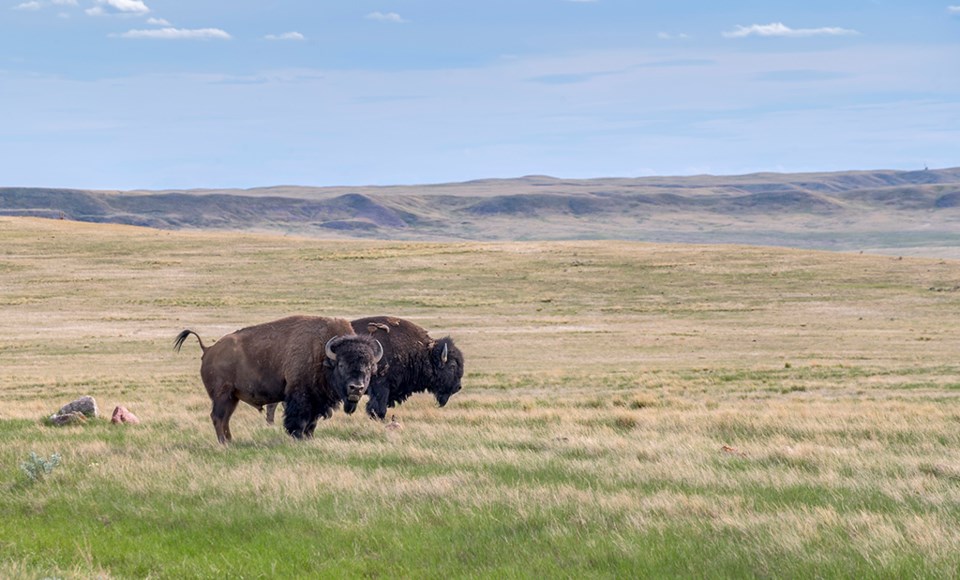SASKATOON — A multi-million-dollar project to help conserve Canada’s wood bison population was announced in Saskatoon this week during the International Bison Conference, an initiative supported by Agriculture and Agri-Food Canada.
The Bison Integrated Genomic project will be led by Genome Prairie and Genome Alberta where $5.1 million in funds will support innovative genomic sequencing to protect the bison in ways like identifying diseases affecting their population.
The funds for the BIG project will include $1.7 million in federal government support from Innovation Science and Economic Development Canada through Genome Canada and another $2.1 million from Parks Canada.
“In developing the vaccine, this will help and aid in identifying certain diseases. Yes, those tools can be used to ensure that we have an efficacious vaccine that is going to do what we hope it will do: protect against tuberculosis,” said Genome Prairie President and CEO Mike Cey.
He added that using genomic-based tools is nothing that people should be especially concerned about since it helps them deliver the results they need in less time.
“The purpose of using these tools is they allow us to deliver some outcomes faster, less expensively and more efficiently than we otherwise would. We’re talking about being able to sequence the genome of a particular living organism, through that understanding and delivering some solutions to the problems we face as a people,” he said.
“A big chunk, of course, is developing the gene biobank. Understanding what our genetic diversity actually is and then being able to make decisions to aid in conservation efforts, to lead to a growing, healthy and sustainable wood bison population as time goes on. We are certainly trying to make sure we understand the complete diversity that we have.”
Diversity, as referred to by University of Saskatchewan Department of Veterinary and Biomedical Sciences professor Dr. Gregg Adams, as inherent due to inbreeding.
“Because of small herds in small populations, this is our best opportunity to ensure that, again, we’re keeping the population healthy as it can be and ideally a growing population,” added Cey.
Cey said they are excited to get involved in research projects, like the use of genomic-based tools, that will create an impact and where they can see its outcomes, especially with cost and efficiency significantly improving over the years.
“What puts us in a good place these days is two things: the cost of using genomic tools has come down, especially in the last 10 years. And the efficiency of using these tools allows us to deliver some impact and outcomes that perhaps we haven’t been able to do in the past. We’re excited about this particular project,” said Cey
He added that they have been managing several research projects in various fields across Manitoba and Saskatchewan, with the BIG the latest program that they are involved in.

